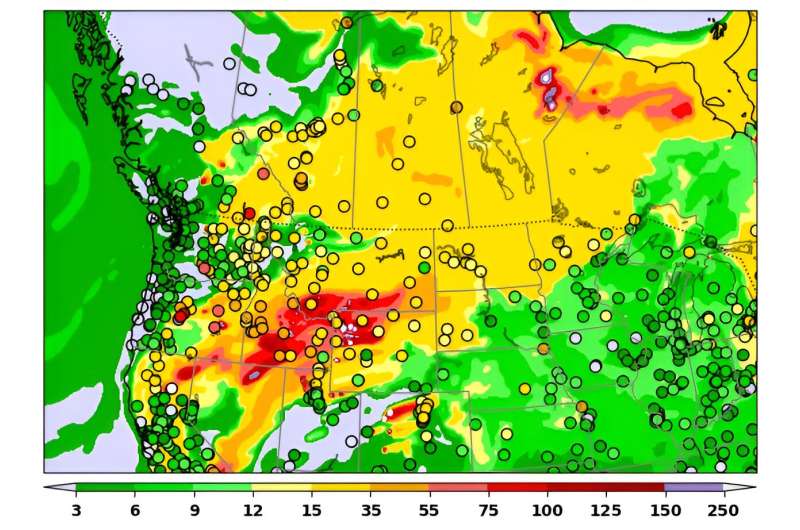This article has been reviewed according to Science X's editorial process and policies. Editors have highlighted the following attributes while ensuring the content's credibility:
fact-checked
trusted source
proofread
It's not just hot air: Improved air quality model aids forecasters in the field

Imagine you're a NOAA weather forecaster in the field during a raging, rapidly-spreading wildfire. Your title is incident meteorologist (or IMET), and your job is to support agencies and emergency responders who fight these devastating blazes by providing accurate weather forecasts. Your forecasts help determine a variety of factors about how the weather could impact the fire, including but not limited to how quickly the fire might spread and where it could go.
But you can't do it alone.
On the ground and in the lab
Behind the scenes, NOAA's Environmental Modeling Center (EMC) and Air Resources Laboratory (ARL) in College Park, Maryland, play a vital role in these critical forecasts. They produce forecast models of air quality that allow IMETs and air quality forecasters to provide more accurate information to emergency responders and the public.
In May 2024, the EMC, working closely with ARL, developed and released a model update that keeps the public, NOAA and partners aware of changes in air quality. The seventh and newest upgrade to the Air Quality Model (AQM v7), builds on past improvements by accounting for more sources of pollutants and putting them together in one air quality model.
How the model works
Information like this doesn't just appear out of thin air.
The AQM v7 forecasts when and where pollutants will be removed from the air, such as getting pulled to the ground by rain, and it predicts how the pollutants will spread out or concentrate through both the horizontal and vertical planes of the atmosphere. AQM v7 incorporates new data from satellite sources more quickly than the last version, and it better accounts for variations and changes in wildfire emissions.
The result is a model that better depicts the concentrations of a wider variety of hazardous pollutants, making the forecasts more valuable for the public and for NOAA partners like the Environmental Protection Agency, the Centers for Disease Control and Prevention, and state and local air quality forecasters.
AQM achieves real-world results
The Park Fire, allegedly sparked by arson in northern California on July 24, 2024, grew to nearly a half million acres by September 2024. In addition to the charred landscape, the wildfire also spewed smoke and hazardous particulates more than 5 miles into the atmosphere. The smoke plume traveled thousands of miles from its origin to places like New England. The updated AQM tracked the traveling plume every step of the way, providing higher resolution data than has ever been available before.
This latest model version is a great example of the work that can be accomplished by the Unified Forecast System, which provides the framework that allows scientists inside and outside of NOAA to contribute to the forecast improvement process.
AQM is scheduled for a further upgrade in fall 2024. The scheduled improvements include utilizing data available from the NOAA-21 satellite, which launched in 2023, and other upgrades that will enable the model to run even more smoothly and with increased accuracy.
Provided by NOAA Headquarters





















